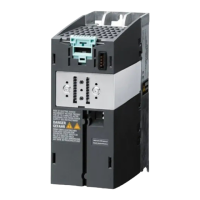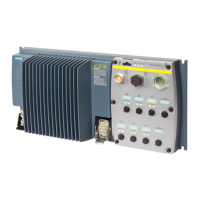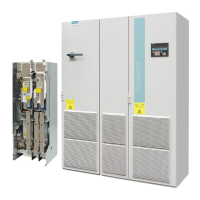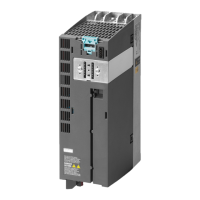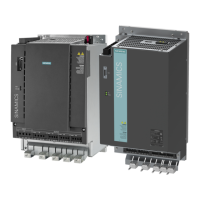Functions
5.10 Technological functions
Frequency inverter
Operating Instructions, 08.10. 2008, t.b.d.
129
Braking methods depending on the drive inverter being used
Table 5- 37 Functions in relationship with the frequency inverters
SINAMICS G120
PM240 PM250 PM260
DC and compound brake X --- ---
Dynamic braking X --- ---
Regenerative braking --- X X
Advantages and disadvantages of the braking methods
● DC brake
– Advantage: The motor is braked without the frequency inverter having to convert the
braking energy
– Disadvantages: Is only used for an OFF1 command, excessive motor temperature
rise, no defined braking response, no constant braking torque, braking energy
dissipated as heat.
● Compound brake
– Advantage: Defined braking response, the motor is braked without the frequency
inverter having to convert any significant amount of braking energy
– Disadvantages: Is only used for an OFF1 command, no constant braking torque,
excessive motor temperature rise, braking energy is lost as heat.
● Dynamic braking
– Advantages: defined braking response, no additional motor heating, constant braking
torque
– Disadvantages: A braking resistor is required, braking energy is lost as heat, the
permissible load of the braking resistor must be taken into account
● Regenerative braking
Advantages:
– The regenerative energy is not converted into heat, but instead, is fed back into the
line supply
– Constant braking torque
– The methods can be used in all applications
– Constant regenerative operation is possible - e.g. when a crane load is being lowered
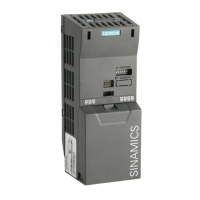
